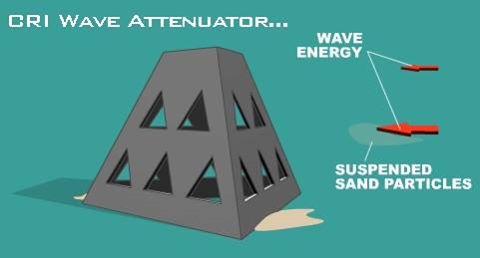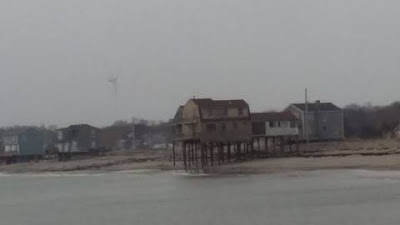We have two birds to kill today. We have the Sunday/Monday snowstorm, and- in the spirit of things- we have a bit of Knowledge to share regarding late-season snowstorms in Massachusetts.
The ever-changing nature of the storm means that we'll leave the discussion of the forecast until the last possible moment. It'll be more accurate this way. If that's what you came to this page for, scroll down until you see the NWS graphic.
March 19th isn't that late in our winter season. Note that I define winter as generally starting with the first snow and ending when the last one melts. March 19th is Spring, but it's early spring.
The latest I have seen snow in Massachusetts is April 28th. That was in Worcester, and we'll get to that in a moment.
I'm going to work with the village of Buzzards Bay for weather stats, because A) it's where I live, and B) it's a nice midway point for our coverage area. I'll also use Boston, as they are easier to find stats for.
Monday is not only a potential snow day. It is a special day as far as historical average temperatures go. It is the first day where historical average high temperatures will be 50 or above, and the average low temperatures will be 32 and above. 32 degrees, as you know, is freezing. Snow needs that 32 degree benchmark for the most part. There's no law that says it can't be zero degrees tomorrow, but it is unlikely when judged by history.
April 22nd is when our historical daily high temperature gets to 60 degrees, so hang in there.
Late-season snow facts:
-
According to WBZ, Boston has had snowfall of 12 inches or more after March 20th once, in 1997. More on that in a sec. Boston has 6 instances where 6 or more inches of snow fell after March 20th. Worcester has had 12 such events.
- Spring starts at 12:30 AM this Sunday, March 20th.
- The latest measurable snowfall for Boston was a half inch on May 10th, 1977. The latest we've had non-accumulating snow in Boston was June 10th, 1955.
-
This source tells me that New York and Atlanta both have the same day, in different years, for latest snowfall... April 25th.
- Most of New England had frost on August 23rd in 1816, and lake ice was seen around the Bay State into August.. This was due to the eruption of Mount Tambora in Indonesia, which gave everyone red, smoky skies and drove worldwide temperatures down. New England had her corn crop fail, and all sorts of food prices skyrocketed. June snow fell in some parts of New England. It is known as
The Year Without A Summer. They had one period where it went from 95 degrees to 35 degrees in a half day.
- Three late-season snowstorms stand out in our history. One was that May 10th, 1977 one from
The Farmer's Almanac. The record is a bit later in the year for the Berkshires. The other late-season trace snow events of note in our history are the ones I was yapping about up above.
- Our second storm of note was the 1997
April Fool's Day Blizzard. Over 25 inches of snow fell on Boston, and coastal flooding tore apart the shoreline.
- Our third late-season storm of note was a
17-21 inch blockbuster that hit Worcester and areas north on April 28th, 1987.
I was a freshman at Worcester State College for that storm, and had just picked up a girl from West Boylston High School for a date... because that's how I rolled in 1987, playboy! We went to a movie, came out, and there were 6 inches of snow on the ground. We had an Italian dinner somewhere, and there was a foot on the ground when we came out of the restaurant.
I had only been driving for a year, and had zero savvy. We nearly hit a plow when we skidded all the way down a hill on Route 9. We also drove into a drift in some guy's yard in Berlin, Massachusetts. It ended well... the homeowner called his sons out to shove my car from the drift, and they came out single file... and each one was bigger than the last. "
Don't worry about it, just steer" is how the father replied when I offered to make Katie drive so that I could get out and help shove the car. They literally lifted my car and threw it from the drift.
I got zero (0) play from that date, too. The only time I even got a hug as when we nearly crashed into the plow, and that may have been a case where she was trying to wrestle me into a position where the plow blade hit me first. I really can't blame her.
Anyhow, 17 inches of snow is about as much as we get that late in the year. If you get snow on your lawn after May 10th, you just saw a regional record.
Snowstorm Forecast Notes
As we publish when we wish, we had no need to keep updating our forecast. TV stations did not enjoy that luxury. They had to have something up every 6 hours or so, and it caused their forecasts to be all over the board.
Here are a few WBZ updates, just to show you how they flail about in the wind.
- March 13th...
"Winter Is Over"
- March 16th... "
Storm coming, worst of it west of 128"
- March 17th... "Danielle Niles
tries to avoid giving a forecast for a March 20th storm on March 17th," although they do have the beginnings of a cool March Madness "Worst Storm Eva" bracket. I see a Blizzard of '78/1991 Halloween Gale final, although they forgot to put in the worst storm we have had in modern history, the 1938 Great New England Hurricane.
- March 17th, 6 hours later, different forecaster... "
6-12 inches"
- March 18th, 12 hours later... "
2 to 4 inches"
- March 19th, noon... "Storm will not form until it is past us,
little or no snow"
- March 19th, 11 PM... "
8 inches"
It's 2 AM on the 20th, and I can not finish this section yet... I have no idea what they will be putting in their 5 AM and noon updates. They may be calling for a heat wave or a hurricane for all I can tell.
(Update) 7 AM, today... possible "
mammoth amounts" Their snow/rain line only touches the Islands and Chatham.
Our own March Madness brackets for Worst Massachusetts Storm Ever, Top 16 Seeds:
1) 1938 Great New England Hurricane
2) 1635 Great Colonial Hurricane
3) Blizzard of '78
4) Hurricane Bob, 1991
5) Worcester Tornado, 1953
6) Halloween Gale, 1991
7) Blizzard of 1888
8) 1898 Portland Gale
9) April Fool's Blizzard, 1997
10) Hurricane Carol/Edna, 1954
11) Hurricane Donna, 1960
12) The Great September Gale Of 1815
13) Winter of 2015
14) 1944 Great Atlantic Hurricane
15) The Triple Storms of 1839
16) Blizzard of 2005
Honorable Mention/Lower Seeds:
2008 Ice Storm
1698, reported 42 inches of snow in Cambridge
1831 Snowstorm, 3 feet on the Cape
1978 pre-Blizzard January snowstorm
2011 Springfield Tornado
Blizzard of 2013
1993 Superstorm
Saxby Gale, 1869
1969 100 Hour Storm
Winter of 1717
1996 South Shore microburst
Hurricane Belle
Hurricane Gloria
Hurricane Irene
Hurricane Sandy/Post-Sandy Wareham microburst
1960 snowstorm
Our Forecast For Sunday/Monday's Entertainment Along The Coast:
There is a
Winter Storm Warning for Plymouth County. Barnstable County only has a Winter Storm Watch..
As of this AM, it looks like the worst of it will fall along the Cape Cod Canal area through Hull or so..
Accuweather, which has also held to a consistent forecast, gives the village of Buzzards Bay 5-10 inches, and they settle on 5.3 inches if you add up their projected daily totals. I added up Duxbury as well, and they get 5.1". A lot of it hinges on where the heavier snow bands set up.
(3:45 PM Update... 7 inches now forecast for Buzzards Bay by
Accuweather)
I'm thinking that the Outer to Mid Cape gets 1-3 inches. The Upper Cape gets 3-6". The South Shore, South Coast and Rhode Island get in the 5-10" range. Middlesex and Cape Ann go to the 3-6" range, and Worcester is the drop-off point where you start clocking 1-3" again.
So, all of Plymouth, Bristol and Norfolk Counties get to share this one. Note that this current track cements a winter total where Cape Cod (or at least the Upper Cape) had more snow than Boston did. There is a very good chance that schools in this area will be cancelled tomorrow. You can blame that Al Nino motherf***er.
Winds should be gusty at the coast. It could be worse. The wobble in the track that gave the South Shore the higher snow also draws the worst of the winds back out into the ocean. An approaching full moon is happening, but we foresee nothing worse than some splashover. There's an 11 AM high tide on Monday that we'll watch for you... we might go to Sandwich for it.
The timing of the storm should be 6-9 PM Sunday through about Monday afternoon. Don't be shocked if you see some rain when it starts, or if the snow doesn't really drop until midnight.
The long-range forecast shows no more snow for this season, and it also seems to say that this weekend will be the last of the below-freezing weather. We'll be at 50 degrees on Wednesday.




















